The rules of SEO keep changing, so how do you keep up?
Feel like you barely have enough time to pivot your SEO strategy?
The evolution of search continues to ramp up and bring a new sense of excitement to the world of SEO.
One way to keep up, especially if you’re an SEO professional working in ecommerce, is to uncover and prioritize commercial opportunities.
Wondering which powerful priorities you should complete first?
The key is surprisingly simple: keep the fundamentals at the forefront of your SEO strategy.
- Keep an eye on seasonal trends to help plan your content strategy.
- Identify low-hanging fruit and prioritize efforts based on value.
- Understand audience intent to better optimize for informational searches.
- Utilize the changing SERP landscape to identify new opportunities.
- Pay attention to your Share of Voice vs. competitors.
Let’s dig into exactly how to do each of these steps so you can level up your SEO strategy.
1. Identify Seasonal Keyword Trends
In a time when the world of search is experiencing unprecedented change, it’s helpful to include SEO tactics in your strategy that bring about a sense of predictability.
One great SEO tactic is to identify and plan for seasonal trends.
Most product demand trends experience seasonal peaks and troughs. But are you timing your content appropriately to maximize traffic and sales from these patterns?
Before you create a new content plan, it’s a good idea to take a look at historical search trends first.
Analyzing historical search data for your key products is a great way to predict whether the same trends will occur in the future.
You’ll be safe in the knowledge that your strategy isn’t based on assumptions, and you may find that demand timings are not quite as you’d expect.
How To Identify Seasonal Keyword Search Trends
The best way to successfully adopt seasonal search trend data into your content strategy is to follow this simple process:
- Plan: Use historical search trend data to plan your content strategy.
- Influence: Ensure you have tactics in place to influence customers when the market is less competitive and customers are in the research phase of their buyer’s journey.
- Peak: Be aware of when your peak is; try to inhabit as much real estate as possible in the SERPs during this time.
- Repeat: Use trend data to identify whether this is a trend that will occur again next year or whether you can move your focus to other categories.
Example: How To Identify Seasonality In Keyword Trends
Let’s take a look at the example of [menswear] searches in Google US and drill down to the product category: Coats and Jackets, using Pi Datametrics Market Intelligence‘s Historical Revenue Potential from January through December of 2022.
Immediately, we see a surprise – the search and demand for coats and jackets actually begin in June. Your marketing should, too.
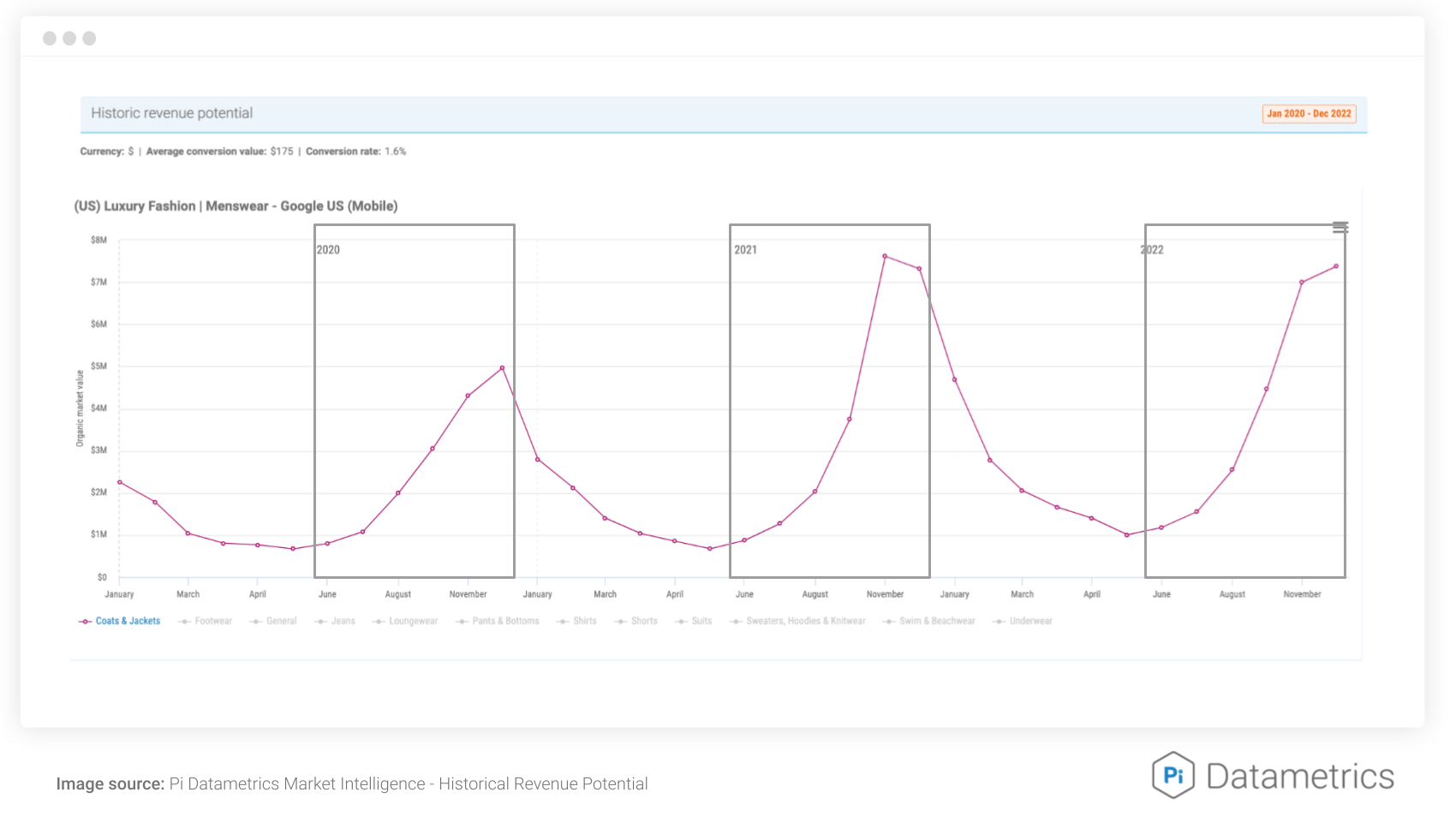 Screenshot from Pi-Datametrics.com, February 2023.
Screenshot from Pi-Datametrics.com, February 2023.Perhaps not what you would expect when summer temperatures are at their peak (it’s certainly surprising to see that there was a similar demand for coats and jackets in August as there was in February).
June is far earlier than when most brands would start merchandising their coats and jacket products.
This creates an opportunity for you to compete in a less competitive and crowded space, both with paid and organic tactics.
Another advantage to ensuring your content is published before the demand peaks is that you’ll be capturing the attention of your future customer during their “research” phase.
So, while customer intent may not be to buy at this time, you’ll have plenty of opportunity to influence them ahead of the purchase decision with retargeting tactics.
2. Find & Capitalize On Low-Hanging Fruit: Medium-Volume Keywords
To quickly increase your organic search ROI, identify content that returns just outside of the positions that get the most clicks for key topics.
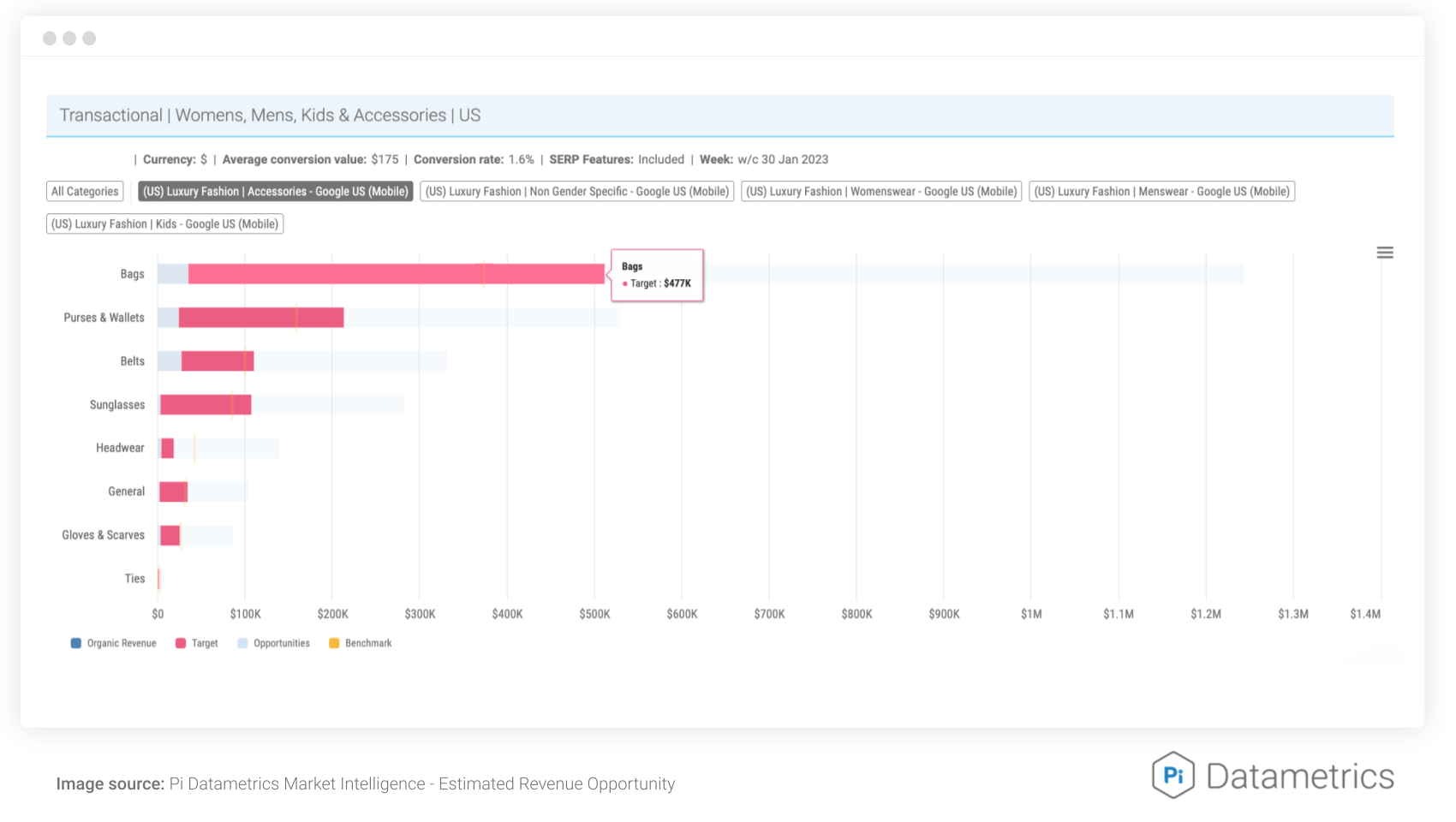 Screenshot from Pi-Datametrics.com, January 2023.
Screenshot from Pi-Datametrics.com, January 2023.In the chart above, you can see that a “target” zone has been identified within Pi Datametrics Market Intelligence‘s Estimated Revenue Opportunity.
Content for these key terms is ranking well enough, but it’s currently sitting outside the positions that get the highest number of clicks (and ultimately, revenue).
Once you have identified this low-hanging fruit, it’s a great place to focus your efforts and optimize accordingly.
There are often easy fixes within this target area, for example, sorting out internal linking causing content cannibalization.
If you can also identify how much additional revenue you would gain from improving this target content; this will help you build internal business cases for getting technical website fixes into release cycles.
How To Capitalize On Medium-Volume Keywords
- Identify: Find and identify content where the opportunity has already been established and you have content that already exists. Look at the content you have sitting on pages 2 and 3 of Google.
- Prioritize: Focus on the terms with the highest revenue opportunity in order to see a quick impact on performance numbers and goals.
- Optimize: Once you’ve prioritized which terms to focus on first, go through each page one by one and optimize accordingly.
3. Optimize Your Content For Informational Searches
Optimizing for long-tail searches is key to capturing your audience at multiple touchpoints before conversion.
One of the best places to start is looking at the questions your audience is asking within the People Also Ask feature of Google search.
You can do this easily with Pi Datametrics People Also Ask Explorer, as seen below.
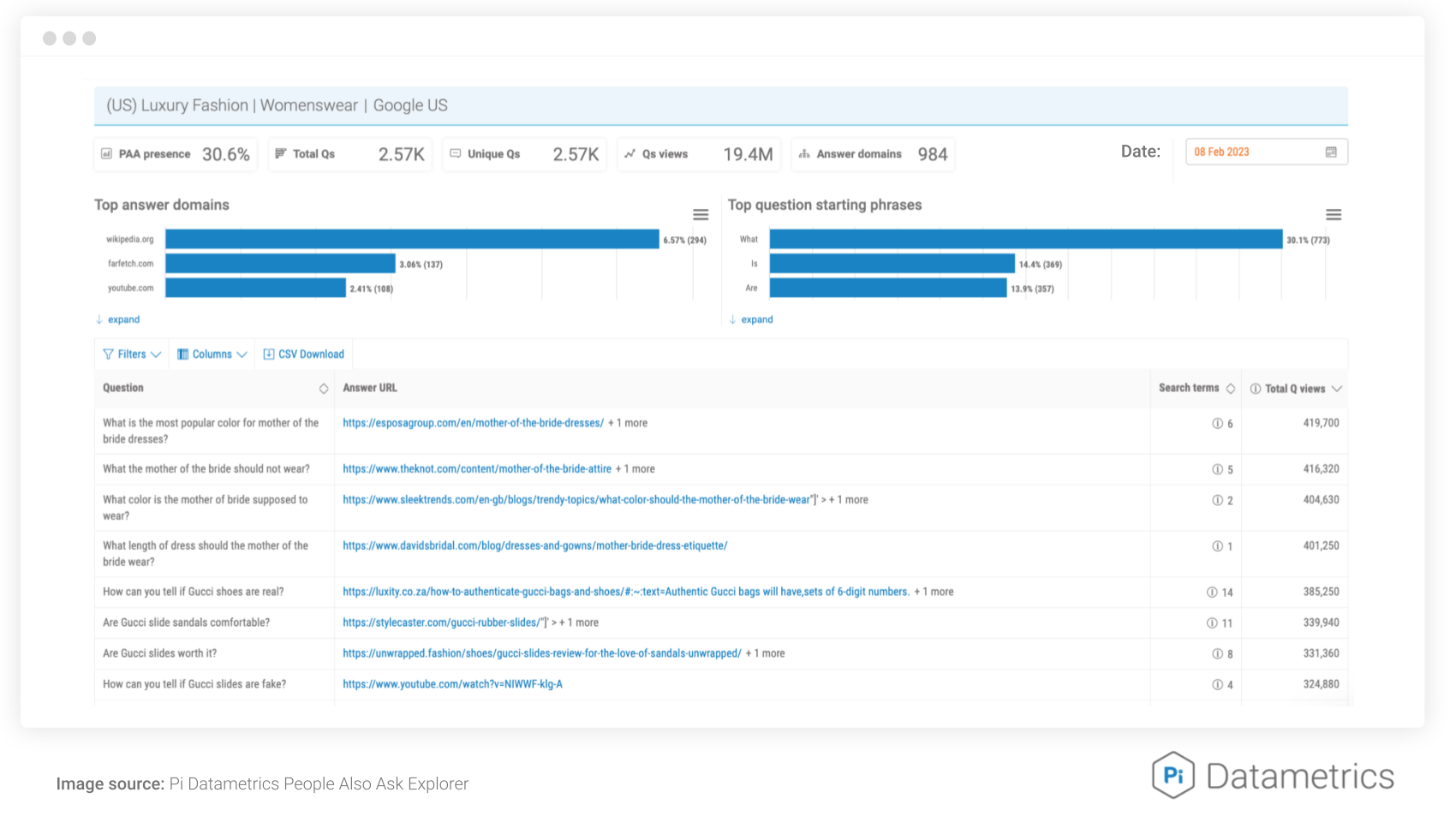 Screenshot from Pi-Datametrics.com, February 2023.
Screenshot from Pi-Datametrics.com, February 2023.Having a good grasp and understanding of your audience’s intent can help inform your content so that it aligns with your customer and their needs.
Google’s People Also Ask feature is a really useful tool to get inside the mind of your customer and have a clearer picture of the content they’re searching for.
Use it to explore which questions on the SERPs relate to your product and key search terms.
Then, create and optimize your content so that you answer these questions and provide your customer with the information they’re looking for, before the point of purchase.
Our research suggests that if a customer views an “informational” page before a product page, they are more likely to convert, have a higher average order value (AOV), and also be a repeat customer.
Top Tips For Influencing Your Audience Before Conversion
- Utilize Google’s People Also Ask feature to get inside the mind of your customer and anticipate the queries they ask Google in relation to your product.
- Ensure your content is optimized to answer these queries, and if it’s not, think about adding new content to your strategy.
- Don’t forget about other SERP features. They all provide new opportunities to get your content in front of your customers and open more doorways to your site.
4. Maximize Opportunities From The Entire SERP
SERP features allow you to appear multiple times on page 1 and entice customers with useful and engaging content.
One new opportunity we’ve seen to gain additional real estate in the SERPs is the rise of the Popular Products feature.
Through our research with Pi Datametrics – SERP Feature Radar, we’ve found that the Google US search results are getting flooded by Popular Products.
When we looked into individual categories, we saw that in:
- US Electrical searches, 75% of searches include Popular Products.
- US Fashion searches, 91% of searches include Popular Products.
- US Homeware searches, 89% of searches include Popular Products.
- US Luxury Fashion searches, 90% of searches include Popular Products.
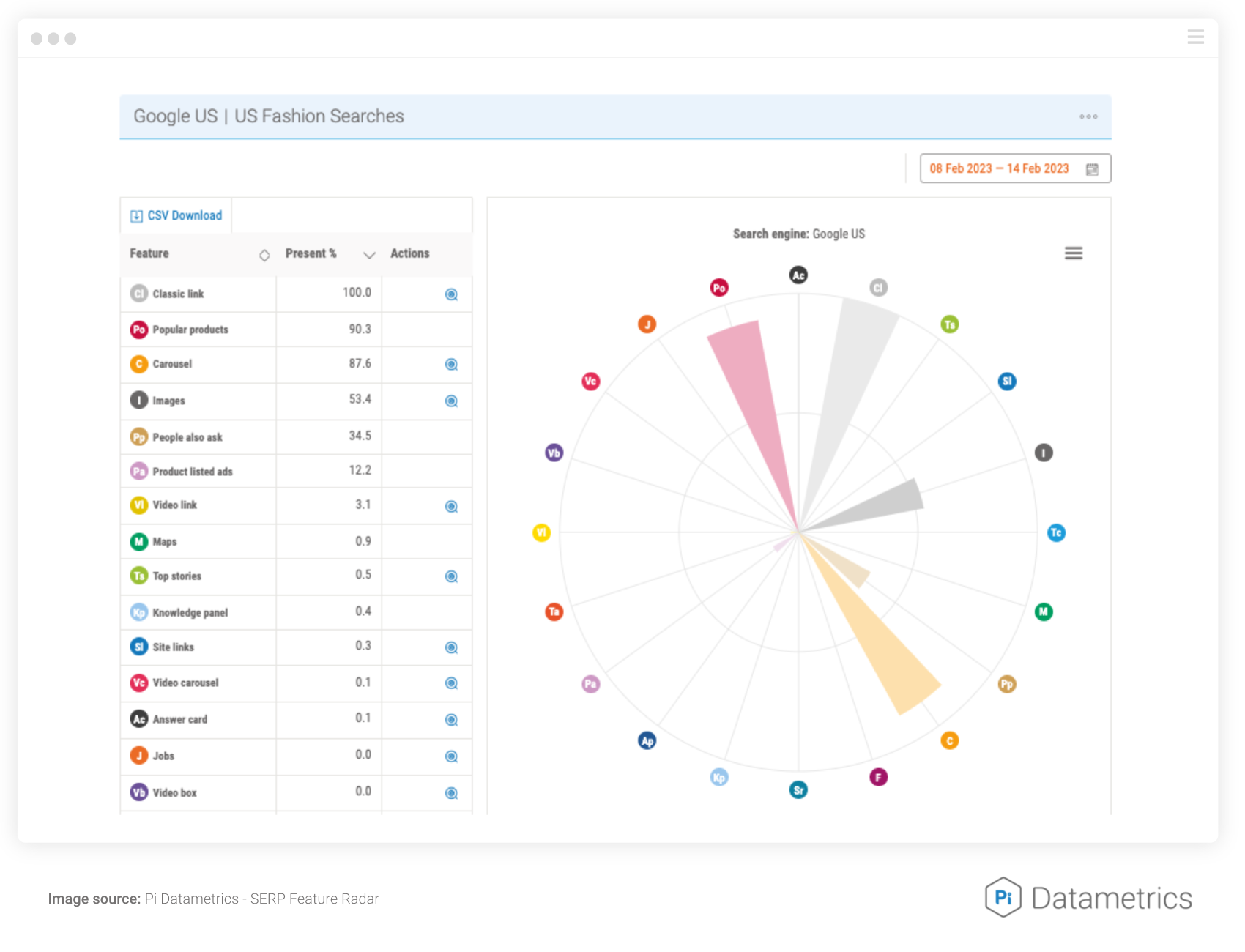 Screenshot from Pi-Datametrics.com, February 2023.
Screenshot from Pi-Datametrics.com, February 2023.The prevalence of this feature in the US search results could be a precursor for things to come in the UK and other markets, too.
If your website sells products, you should be considering optimizing for the Popular Product feature.
How To Optimize Your Products For The Popular Product Search Feature
This will mainly rely on submitting your product feeds to Google Merchant Center and adding product schema to your site’s product details pages (PDPs).
Be sure your product feeds include:
- ID.
- Title.
- Description.
- Link.
- Image link.
- Gtin.
- Price.
- Brand.
- Availability.
Bonus: Some other optimizations that will improve your chance of appearing for Popular Product features include:
- Product reviews.
- Relevant product titles that target the exact match keyword.
- Competitive product pricing.
Think about all the attributes within your product feed that help your product offering look competitive and provide customers with as much information possible (for example, multiple color options).
5. Find & Increase Your Share Of Value
At a macro level, a great way to identify additional commercial opportunities for your brand is to look at your organic share of value (SOV).
What is Share of Value?
Share of value in Pi’s Market Intelligence tool calculates the share of Organic Value Score (OVS) a domain owns in a particular category. Every position earns a score, this is summed and then divided into a “share of” calculation.
Evaluating which categories and subcategories you perform well for versus your competitors can help focus your attention on areas that are likely to increase your SOV.
In the Market Intelligence Share of Value chart below, you can see Nordstrom performs the strongest overall. But more specifically, they also clearly outperform competitors in the womenswear category.
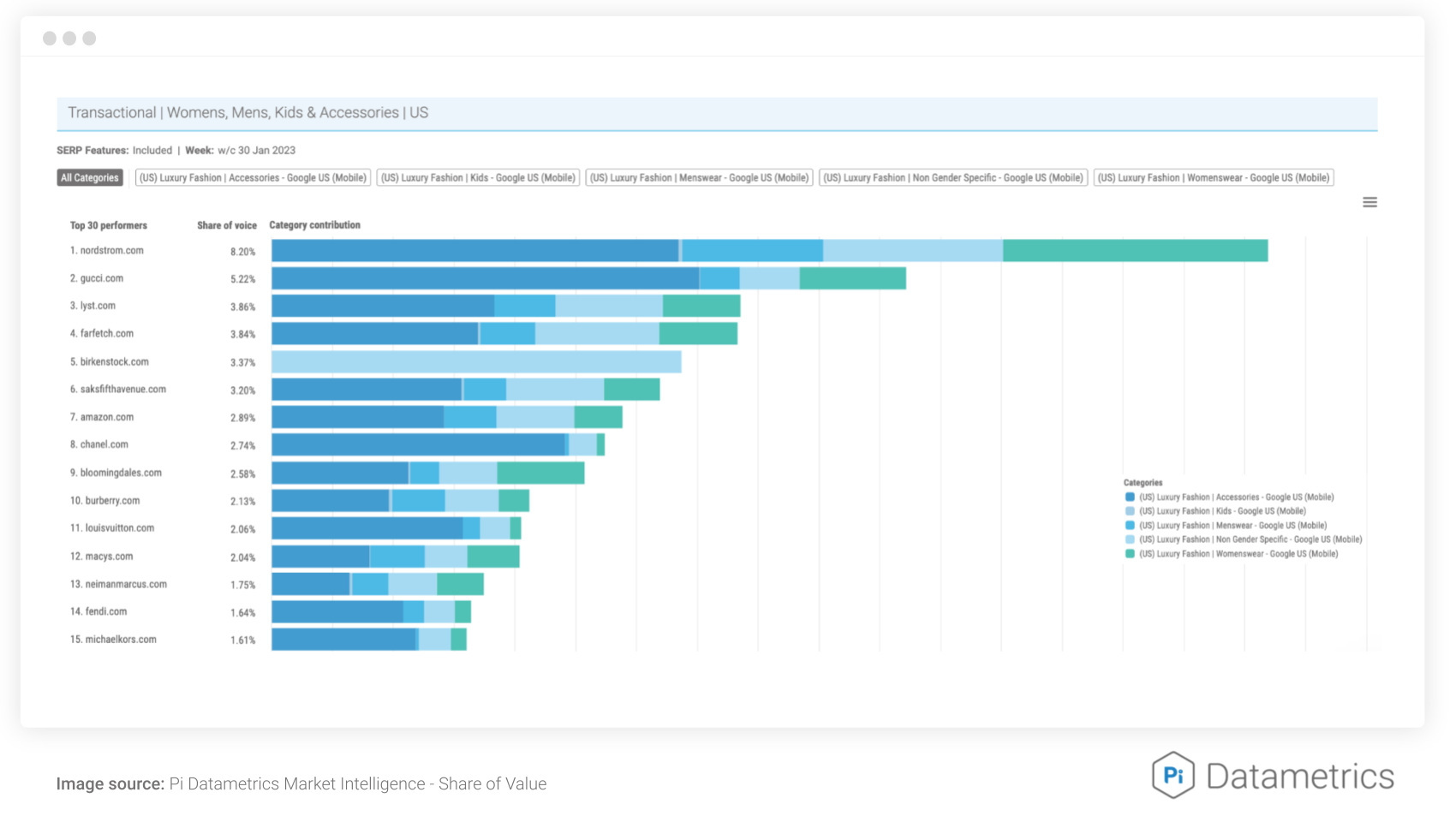 Screenshot from Pi-Datametrics.com, January 2023.
Screenshot from Pi-Datametrics.com, January 2023.Next, you would want to break down which subcategories within the womenswear category are contributing to Nordstrom’s superior performance.
Below, you can see their visibility for [Coats and Jackets] and [Dresses] terms is where they are excelling. This view in Pi Datametrics Market Intelligence‘s Share of Value demonstrates an opportunity within those subcategories to increase performance and therefore revenue.
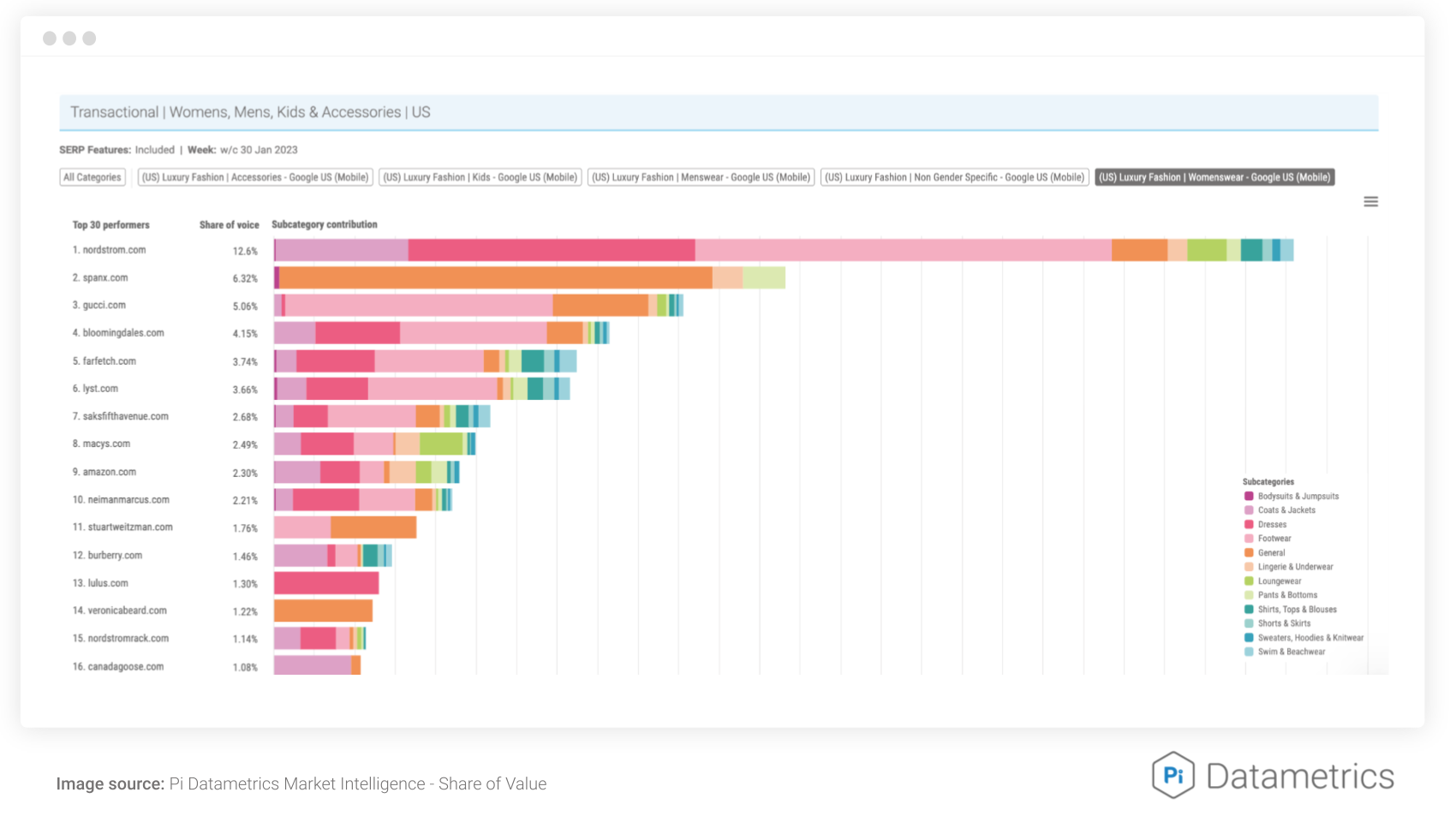 Screenshot from Pi-Datametrics.com, January 2023.
Screenshot from Pi-Datametrics.com, January 2023.Uncover which terms within those categories are contributing to good performance. This will allow you to have a better focus for optimization from a top-down level. You can be more confident that your efforts are going to deliver increased revenue and brand awareness.
Interested to see who the market leaders in your sector are? View Pi Datametrics’ Market Leaderboards below:
How Can You Utilize Share Of Value Data?
- Use share of value data as a benchmark to measure future performance.
- Highlight categories where your efforts will deliver increased ROI and brand awareness.
- Identify key competitors and major rivals within a specific sector.
- Uncover potential partners – if publishers share a large percentage of value in your market it might be worth reaching out for new PR or advertising opportunities.
The opinions expressed in this article are the sponsor's own.



